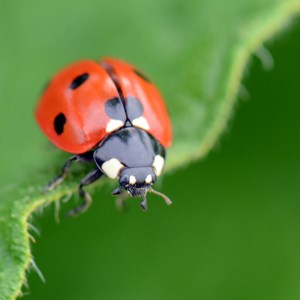Contact
Tomas Jonsson, Researcher
Department of Ecology
tomas.jonsson@slu.se +46 (0)18-673401
Department of Ecology, NJ, Agricultural Entomology Unit
Riccardo Bommarco, Professor
Department of Ecology, SLU
riccardo.bommarco@slu.se, +46 18 67 24 23

Researchers from SLU has shown how an increasing number of predator species weakens the ability of a single-trait food web model to predict experimentally observed outcomes of trophic interactions. This new information will be important when developing food web models that can be used to predict biological control.
It has been known for a long time that body size of organisms can help explain many biological phenomena, from the physiology of individuals to processes and patterns in ecosystems. For example, it is widely assumed that consumption determined by the match between predator and prey body-sizes can be a main driver of ecological community dynamics.
Food web models where body sizes of interacting species are taken into consideration in this way are called Allometric Trophic Network models. Such models, despite being based on a single species trait only (body size), have the potential to predict how the abundances of species in real ecosystems (including agricultural systems with pest species and natural predators) change over time.
Tomas Jonsson , Riikka Kaartinen, Mattias Jonsson and Riccardo Bommarco (allfrom the Department of Ecology at SLU, TJ also from University of Skövde) wanted to examine if other traits than body size are important in more complex food webs.
– We conducted a microcosm experiment with aphids as prey and an array of predators. We combined four predatory insect species with contrasting body sizes and examined to what extent the outcome of the experiment could be predicted by a food web model parameterized with body sizes, and if other traits appeared to be important, says Mattias Jonsson.
Overall, predator–prey body size ratios emerged as strong predictors of trophic interaction strengths, thereby confirming that the Allometric Trophic Network model can describe community dynamics remarkably well.
– However, we found that the importance of body size decreased with increasing complexity in the food wed. This is due to a combination of indirect effects where the densities and behaviors of any individual species of predator and prey is modified by the presence of other species in ways not covered by the current model. These effects are probably related to traits other than body size, which need to be taken into account when scaling up results, says Tomas Jonsson.
The findings in this study encourage the development of dynamical food web models explicitly including and exploring such indirect mechanisms, so that how the abundances of species in real ecosystems change over time can be better predicted.
Tomas Jonsson, Researcher
Department of Ecology
tomas.jonsson@slu.se +46 (0)18-673401
Riccardo Bommarco, Professor
Department of Ecology, SLU
riccardo.bommarco@slu.se, +46 18 67 24 23